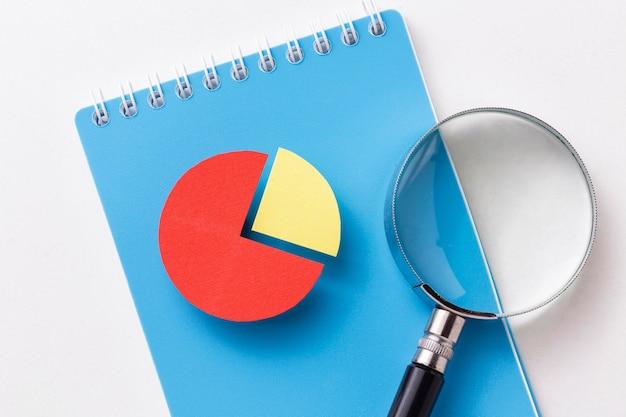In the world of economics, monetary policy plays a crucial role in shaping a country’s financial landscape. As governments strive to maintain stability and promote economic growth, they utilize various tools to control and manage their economies. Two key methods in the realm of monetary policy are quantitative and qualitative instruments.
In this blog post, we will delve into the differences between these two approaches and explore their respective roles in shaping economic outcomes. By understanding the nuances of quantitative and qualitative instruments of monetary policy, we can gain insights into how governments navigate the complex web of financial control and contribute to the overall well-being of their nations. So, let’s dive in and unravel the mechanics of these instruments that influence our monetary systems!

What is the Difference Between Quantitative and Qualitative Instruments of Monetary Policy
Overview of Monetary Policy
Monetary policy plays a vital role in controlling the economy and influencing interest rates, inflation, and overall economic growth. Central banks, like the Federal Reserve in the United States, employ various instruments to implement monetary policy. Two significant types of instruments are quantitative and qualitative measures.
Quantitative Measures: Pumping Up the Volume
Quantitative measures involve the central bank controlling the money supply by buying or selling government securities. In simpler terms, it’s like adjusting the volume knob on your stereo. When the economy needs a boost, the central bank turns up the volume by purchasing government securities, which injects more money into the system. Conversely, when the economy needs cooling down, the central bank reduces the volume by selling securities.
One key quantitative tool is open market operations where the central bank buys or sells government bonds in the open market. By doing so, they influence the level of reserves banks hold, which in turn affects interest rates and lending capacity.
Qualitative Measures: Adding Some Flavors
While quantitative measures are like adjusting the volume, qualitative measures are more like adding specific flavors to your favorite dish. Instead of directly controlling the money supply, qualitative measures focus on influencing market behavior and credit allocation.
Reserve requirements represent a primary qualitative instrument. It involves specifying the minimum amount of funds banks must keep in reserve against their deposits. By adjusting these requirements, the central bank can encourage or discourage lending activity.
Another qualitative measure is credit controls, which enable the central bank to determine the terms and conditions under which banks can offer loans. Think of it as the central bank telling banks, “Hey, you can offer loans, but only for this specific purpose or to these particular borrowers.”
The Wisdom of Applying Both Approaches
While quantitative and qualitative measures differ in their approach, they often work hand in hand. Central banks frequently employ a mix of these instruments to achieve their desired economic outcomes. It’s like using both hands to play a piano – you need the right balance and coordination to create harmonious melodies.
By combining both types of instruments, central banks can fine-tune the money supply, regulate interest rates, and influence credit distribution. This harmonious approach helps in maintaining stability, moderating inflation, and fostering healthy economic growth.
While quantitative measures focus on controlling the money supply directly, qualitative measures aim to shape market behavior and credit allocation. Both types of instruments play a crucial role in the grand symphony of monetary policy. So, the next time you hear the terms quantitative and qualitative, think of them as the volume and flavors that central banks use to create economic harmony.
Remember, understanding the difference between these instruments isn’t just a job for economists – it’s something every curious economic explorer should appreciate. So, go forth and embrace the wonderful world of monetary policy!

Introduction
In the ever-changing landscape of monetary policy, it’s important to understand the key differences between quantitative and qualitative instruments. These instruments play a crucial role in how central banks navigate economic waters. So, let’s dive in and explore the FAQs surrounding this topic.
What is the difference between quantitative and qualitative instruments of monetary policy
Quantitative instruments are like the sledgehammers of monetary policy, aimed at dealing with macroeconomic issues. They involve adjusting the overall money supply to impact the cost and availability of credit. On the other hand, qualitative instruments are more surgical in nature. They target specific sectors or institutions, aiming to address structural problems in the financial system.
What is the purpose of credit control
Ah, credit control, the ultimate corner boss of monetary policy. Its purpose is to maintain financial stability and control inflation by managing the availability and cost of credit. Picture credit control as the all-knowing gatekeeper of the financial system, ensuring that the flow of credit remains within manageable bounds.
What are quantitative and qualitative credit control instruments
Quantitative Credit Controls
Think of quantitative credit controls as the Marlon Brando of the monetary policy world – big, powerful, and influential. These measures directly affect the overall money supply. Some common quantitative instruments include:
Open Market Operations
This is where central banks buy or sell government securities in the open market to influence the money supply. Buying securities injects money into the economy, while selling securities withdraws money from circulation. It’s like the central bank playing stock market guru in a high-stakes game.
Reserve Requirements
Reserve requirements are the financial equivalent of “checking everyone’s IDs at the door.” They stipulate the minimum amount of cash that banks must keep on hand as a percentage of their deposits. If the central bank increases reserve requirements, it basically slaps the banks on the wrist, reducing their ability to lend and curbing economic growth.
Discount Window Lending
This one’s like a secret club where only banks can borrow money from the central bank. When banks need a quick injection of cash to meet their reserve requirements, they can resort to the discount window. The central bank sets the interest rate on these loans, and it ain’t no jolly disco party.
Qualitative Credit Controls
Qualitative credit controls are the precision instruments of monetary policy, targeting specific sectors or issues. These measures help central banks address structural concerns within the financial system. Here are a couple of examples:
Credit Rationing
Ever been at a buffet where the servers limit the amount of food you can pile onto your plate? That’s credit rationing – the central bank imposes limits on the amount of credit certain sectors or institutions can obtain. It’s like saying, “Sorry, no more dessert for you, Mr. Risky Hedge Fund!”
Moral Suasion
No, it’s not a new-age therapy technique. Moral suasion is when the central bank uses its influence, but not its power, to persuade banks and other financial institutions to follow specific guidelines or make certain adjustments. Imagine the central bank as the friendly neighbor, casually suggesting that the banks might want to “think twice” about their risky lending practices.
What is the function of the credit control department
The credit control department is like the command center of monetary policy operations. Its primary function is to implement and manage the various credit control instruments. They monitor the overall health of the financial system, analyze data, make recommendations, and ensure compliance with policy measures. It’s like having a team of financial superheroes safeguarding the stability of the entire economy.
Understanding the difference between quantitative and qualitative instruments of monetary policy, along with credit control, is key to grasping how central banks manage the financial system. With these FAQs answered, you’re now equipped with a deeper understanding of this complex subject. Stay curious, my friends, as the world of monetary policy continues to evolve and shape the economic landscape.
